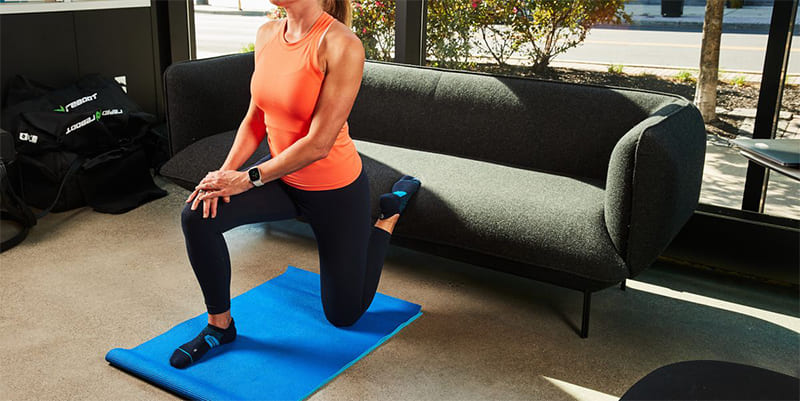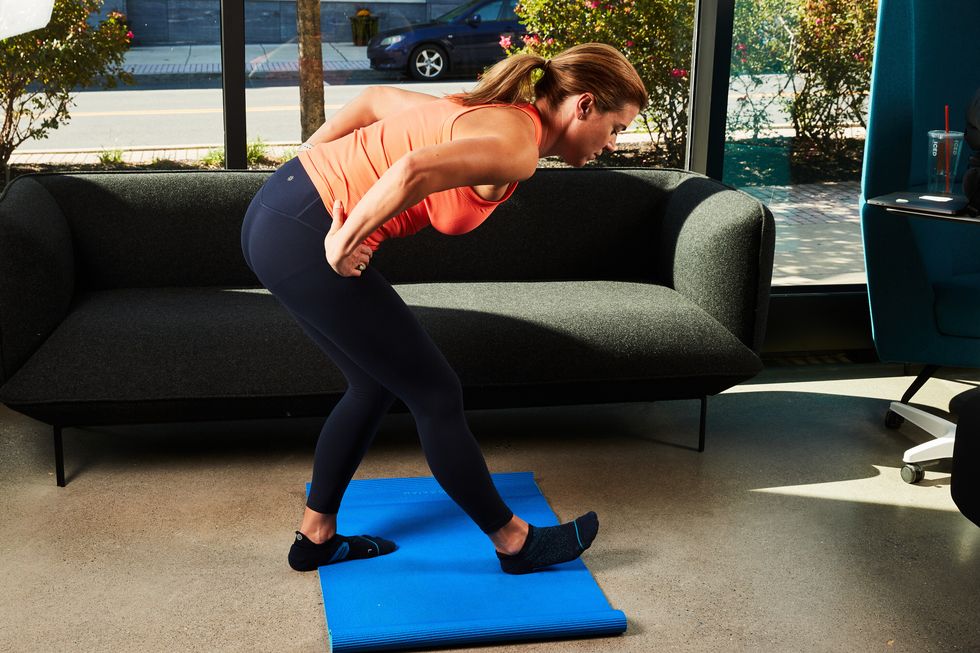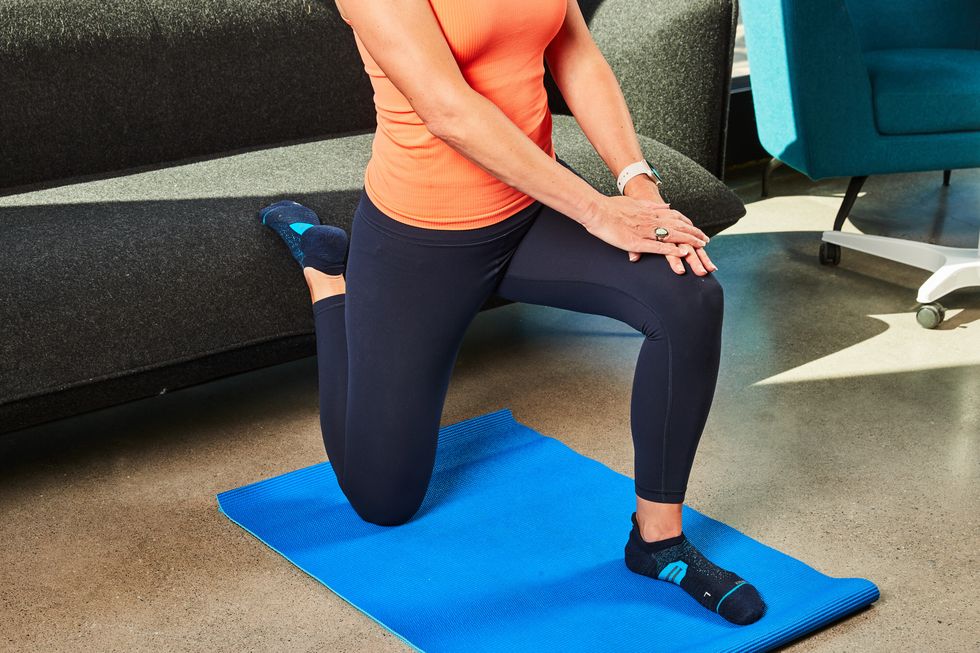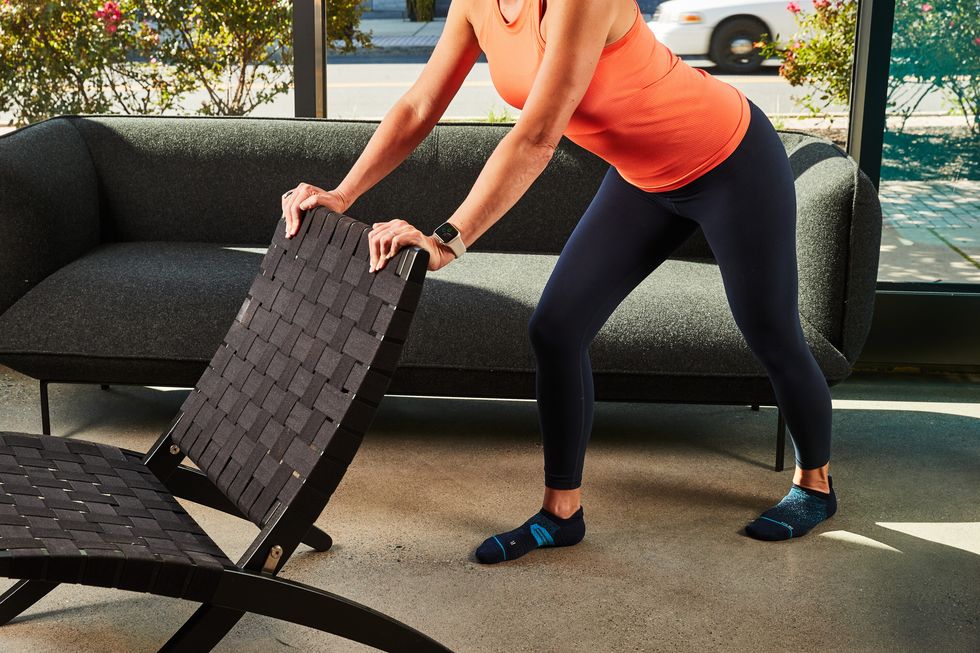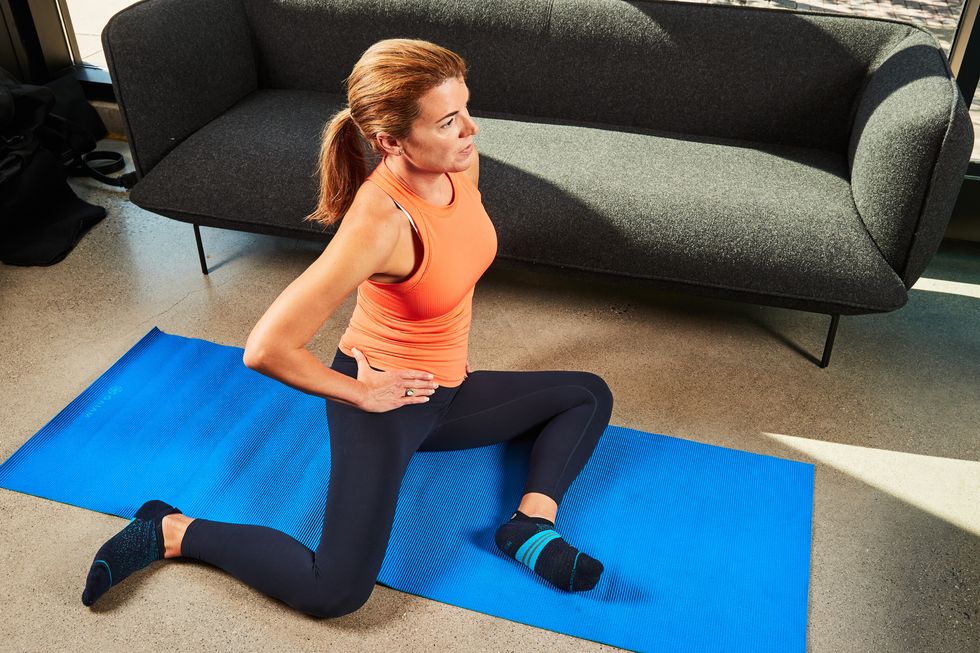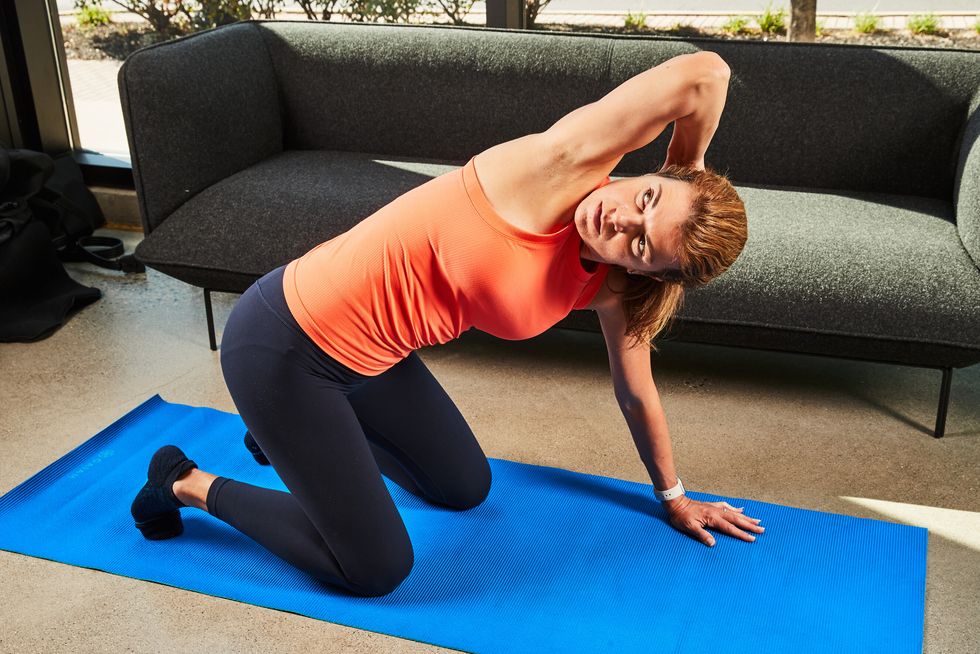When talking specifics, stretching terminology can get confusing. “Passive” and “static” generally refer to the same old-school method of relaxing into a stretch and holding it for 30 to 60 seconds. But when a coach or trainer recommends doing “active” stretches before a run, they may not be referring to the typical “dynamic” stretches you see most runners drill before hitting the road. (Think: leg swings, butt kicks, and walking lunges.)
While dynamic moves can certainly offer benefits, active stretching looks a little more like static stretching than dynamic, despite being completely different. (Like we said, it can be confusing!)
To bring some clarity to the topic (and your warmup), we asked a couple of experts to answer the question: “What is active stretching?” Below are their answers, as well as guidance on how and when to do the best active stretches for runners.
What Active Stretching Means
Active stretching, also known as end-range isometrics, is a form of stretching that includes muscle activation, explains Grayson Wickham, P.T., D.P.T., C.S.C.S., founder of Movement Vault. “You activate the muscles while they’re maximally stretched out in the form of a muscle contraction,” he tells Runner’s World.
For example, when doing a typical static hamstring stretch, you prop your heel up on a curb or bench, straighten your leg, and lean forward, allowing gravity to do the work. In the active version of this stretch, you start in the same position. But once you’ve reached the deepest expression of the stretch, you contract the hamstring and hold it for 10 to 20 seconds.
You can think of this muscle contraction as a “conversation” with your nervous system, Wickham says. “Your nervous system is always trying to protect you,” he says. It remembers past injuries and knows when you’ve been skipping mobility work.
Using that information, the nervous system limits your range of motion accordingly, which results in tight-feeling muscles and joints. “When we do active stretching, we’re essentially decreasing our nervous system tone in a muscle. We’re decreasing that low level of output from your central nervous system that’s making your hamstrings tight,” Wickham says. Once the message is received, your body knows it’s safe to increase your range of motion.
Active stretching also helps bolster the stability of joints. “[Active stretching] has an effect physically at the muscle-tendon level because anytime you apply load to a muscle or a tendon, it’s going to adapt,” Wickham says. By contacting your muscles at your end range of motion, you’re building strength in that position and increasing joint proprioception, or body awareness.
Active Stretching vs. Static and Dynamic Stretching
Other types of stretching, like static stretching (holding a muscle under tension for at least 30 seconds) and dynamic stretching (actively moving the limbs through their range of motion, sometimes with the help of momentum), also have value. But when you use these methods in relation to your workout makes a difference.
Some research shows that static stretching before a workout may negatively affect your performance and even increase your risk of injury. Most trainers and movement professionals, including Wickham, advise against it. “The main thing that’s happening when you’re static stretching is you’re helping your body override the stretch response, but you’re not improving joint stability,” he says. “You just opened up some range of motion that your body can’t control.”
Kate Baird, M.A., A.C.S.M.-C.E.P, C.S.C.S., an exercise physiologist at the Hospital for Special Surgery in New York City, tells Runner’s World that static stretching after a run or on rest days can be worthwhile. “If you just went on this long run, that is the time to relax, let your nervous system come down, and let your muscles down regulate,” she says. “There may be times you just need to lie on your back and stretch your hamstring with a yoga strap.”
Dynamic stretching is better suited for a prerun warmup: It elevates your heart rate, brings your tissues up to temp, and preps your nervous system for action. However, without purposeful muscle activation, you won’t improve joint stability.
So, before you get into your butt kicks and hip circles, do some active stretching. “I think placing [active stretching] before your run is a really good tool, right before you get into a more dynamic warmup,” Baird says.
How to Incorporate Active Stretching Into Your Routine
As noted above, it’s best to perform active stretching before a run, but you can also incorporate it into your cross-training and mobility work. “Doing [active stretching] on days when you’re not running and you’re going to be doing some core work or stability exercises, that’s well-placed stretching in a runner’s routine, for sure,” Baird says.
As for frequency, Wickham recommends active stretching at least three times a week for 10 to 15 minutes, regardless of whether or not you’re training.
Active Stretches for Runners
The following active stretches can be performed together as a full-body mobility workout, or you can select specific stretches to mix into your current warmup routine.
1. Active Hamstring Stretch
- Stand with feet hip-width apart and take a step forward with right foot.
- Mostly straighten right leg, but allow a gentle bend in knee.
- Bend left knee and push hips back until you feel a deep stretch in right hamstring.
- Contract left hamstring by digging left heel into ground. Hold for 20 seconds.
- Repeat on opposite leg. Complete 3 sets.
2. Active Couch Stretch
- Stand with back to a wall or couch (a heavy box or bench will also work).
- Assume a half-kneeling position with left leg bent in front and right knee on ground. (You may want to place a mat or towel under knee for comfort.)
- Lift right foot and place top of right foot against wall or on top of couch so you feel a deep stretch in right hip flexor and quadriceps.
- Holding the position, push right foot into wall or couch and hold for 20 seconds. You should feel this in the hip flexors and quads.
- Repeat on opposite leg. Complete 3 sets.
3. Active Calf Stretch
- Place hands on wall or chair. Keep right foot close to wall and take large step back with left foot.
- Lean forward slightly and straighten left leg to stretch left calf.
- Once you feel a deep stretch, push left foot into the ground (think about pushing down on a gas pedal) so you feel the calf fire up. Hold for 20 seconds.
- Repeat on opposite leg. Complete 3 sets.
4. Active 90-90 Stretch
- Start seated with knees bent 90 degrees and feet planted.
- Place left shin on ground in front of you and right shin to the side.
- Lean forward over left shin until you feel a deep stretch in right hip and glutes.
- Press left leg into ground to activate the hips and glutes. Hold for 20 seconds.
- Repeat on opposite leg. Complete 3 sets.
5. Kneeling Rotational Hold
- Start on all fours in a quadruped position with hands directly under shoulders, then sit back on heels. Place right hand on back of head.
- Keeping left hand on ground, rotate torso open to right so right elbow is pointing toward ceiling.
- Once you’ve rotated as far as possible, hold the stretch for 20 seconds, but continue to try to rotate even further. You should feel this in the middle and upper back muscles.
- Repeat on opposite side. Complete 3 sets.

